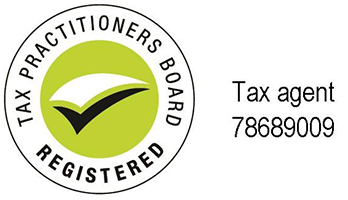ATO’s Administrative Approach to Claiming WFH Deductions
| Before 1 July 2022, taxpayers had the choice of using one of three methods to calculate their deduction for WFH expenses: – the shortcut method was available at the rate of 80 cents per hour worked from home from 1 March 2020 to the end of the 2021–22 income year (i.e. until 30 June 2022) — this method is explained in Practical Compliance Guideline PCG 2020/3; – the fixed rate method was available from 1 July 1998 to 30 June 2022 (the rate for the 2021–22 income year was 52 cents per hour worked from home) — this method is explained in Part 5 of Law Administration Practice Statement PS LA 2001/6; or – actual expenses — by calculating the actual expenses incurred as a result of WFH. Following the end of the shortcut method for claiming WFH expenses, the ATO issued Practical Compliance Guideline PCG 2023/1 (PCG). The PCG sets out the ATO’s approach for claiming a deduction for additional running expenses incurred while WFH. From 1 July 2022, taxpayers can continue to claim their actual expenses, or they can use the fixed rate method outlined in paragraphs 23 to 26 of the PCG. Under the PCG, the fixed rate per hour worked from home is: – for the 2022–23 and 2023–24 income years — 67 cents per hour; and from – 1 July 2024 — 70 cents per hour (the PCG was updated on 16 April 2025 for the new fixed rate). The PCG explains that the Commissioner will not have cause to apply compliance resources to review deductions for WFH expenses if: – the taxpayer meets the criteria outlined in paragraph 18 of the PCG; – the taxpayer uses the fixed rate method outlined in paragraphs 23 to 26 of the PCG to calculate the additional running expenses they incur as a result of WFH. Taxpayers cannot use the PCG if: – the number of hours they used to work out their WFH expenses claim (see paragraph 26 of the PCG) exceeds the number of hours they actually worked at home; or – they claim a separate deduction for any of the expenses listed in paragraph 23 of the PCG (see below). Importantly, the fixed rate detailed in the PCG is not prescribed by legislation. Rather, it is an administrative concession that the ATO has provided to taxpayers in respect of WFH claims. This means that if a taxpayer objects to an assessment in relation to their WFH expenses, they cannot rely on using the fixed rate method in the PCG to determine whether they are entitled to a deduction for their expenses (see paragraph 6 of the PCG). Only the actual expenses incurred as a result of WFH and for which the taxpayer has adequate records will be allowed as a deduction. Fixed Rate Method The fixed rate method involves claiming a fixed rate for each hour worked from home during the relevant income year. This rate includes the additional expenses incurred for: – home and mobile internet or data expenses; – home and mobile phone usage expenses; – electricity and gas (energy expenses) for heating, cooling and lighting; and – stationery and computer consumables. Eligibility To be eligible to use the fixed rate method, the taxpayer must: – Be WFH They must be WFH while carrying out employment duties or carrying on business on or after 1 July 2022. – The work must be substantive and directly related to income-producing activities (occasionally checking emails or taking phone calls does not qualify as income-producing activities). – Taxpayers do not need to have a separate home office or dedicated work area set aside in their home to use the fixed rate method. Incur additional running expenses – They must have incurred one or more of the additional expenses listed above. – This criterion is not met where these additional running expenses have been reimbursed by a third party (e.g. employer). Keep and maintain relevant records – There must be a record (such as a timesheet, roster, diary or other similar document) showing the number of actual hours worked from home during the entire income year — an estimate of the hours is not acceptable. – There must be one document for each additional running expense incurred during the year (e.g. invoice, bill, or credit card statement). Calculating the Deduction Using the fixed rate method to calculate the WFH deduction involves calculating and keeping records of the hours worked from home. The total number of hours is then multiplied by the applicable rate, and the result is the amount of the deduction that can be claimed for additional running expenses while WFH. If the fixed rate method is used, additional separate deductions cannot be claimed for these expenses. However, a separate deduction can be claimed for items used for work-related purposes that are not included in the fixed rate calculation, such as claiming a deduction for the decline in value of assets to the extent they are used for a taxable purpose, such as computers and other technology, and office furniture, provided the costs have not already been reimbursed by a third party. A deduction can also be claimed for the repairs and maintenance of these assets. Note that if the asset costs: – $300 or less and is used mainly for work-related purposes — an immediate deduction for the cost can be claimed in the income year in which it was purchased; – more than $300 or forms part of a set that costs more than $300 — a deduction for the decline in value of the asset can be claimed. The use of the asset must be apportioned between work and private purposes, as only the depreciation from the work-related portion can be deducted. Actual Cost Method The actual cost method of calculating deductions for WFH expenses involves working out the actual additional expenses incurred while WFH. This includes but is not limited to: – the decline in value of depreciating assets — for example, home office furniture (desk, chair) and furnishings, phones and computers, laptops or similar devices; – electricity and gas (energy expenses) for heating, cooling and lighting; – home and mobile phone, data and internet expenses; – stationery and computer consumables; and – cleaning a dedicated home office When an expense is incurred for both private and work purposes, only the work-related portion can be claimed as a deduction. The deduction needs to be apportioned on a fair and reasonable basis. Eligibility To use the actual cost method to calculate deductions for WFH expenses, the taxpayer must have: – incurred additional running expenses as a result of WFH; and – records of the expenses that show the amount of the expenses and the portion of work-related use of these expenses and assets. A taxpayer does not incur additional running expenses if other members of their household (who are not WFH) are in the same room as them while WFH. Calculating the Deduction Decline in the value of depreciating assets – If the asset costs $300 or less and is used mainly for work-related purposes — an immediate deduction for the cost can be claimed in the income year in which it was purchased; – If the asset costs more than $300 or forms part of a set that costs more than $300 — a deduction for the decline in value of the asset can be claimed. – The use of the asset must be apportioned between work and private purposes. – To claim a deduction, the taxpayer must have records that show the amount spent on the asset; and – To claim a deduction, the taxpayer must have records that show the percentage of the year that the asset was used exclusively for work-related purposes. Cleaning expenses If the taxpayer has a dedicated home office, they can claim the cost of cleaning expenses, but the claim must be apportioned for any private use of the home office by the taxpayer or other members of their household. For example, if a room is set up as a home office, the claim is worked out by: – Adding together the receipts for cleaning expenses; – Multiplying this total by the floor area of the dedicated work area; – Dividing this result by the whole floor area of the house; then – Reducing this amount by the percentage of private use by the taxpayer or other members of their household. Energy expenses The claim is worked out by: – Multiplying the cost per unit of power used (refer to utility bills for this information) by the average energy units used per hour — this information may be found in the manufacturer information, the star energy rating label or by searching the internet). This is both per kilowatt (kw) hour for each electrical appliance, equipment or light used and per megajoule (MJ) hour for gas heating appliances used. Then multiplying this result by the total annual hours used for work-related purposes. Phone, data and internet The claim is worked out using an itemized phone or internet bill to determine the work-related use over a continuous four-week period. This percentage can then be used to work out the expenses for the entire income year. See PS LA 2001/6. What Cannot Be Claimed? Taxpayers who work from home cannot claim: – coffee, tea, milk and other general household items, even if their employer provides these at work; – costs that relate to their children’s education, such as iPads, desks and subscriptions for online learning; – items provided by their employer, such as a laptop or a mobile phone; and – expenses for which the cost has been reimbursed by their employer. Closing Comments Each tax time, the ATO reminds taxpayers to correctly work out their deductions for WFH expenses. Setting good habits during the working year, including keeping accurate records of actual hours worked and expenses incurred, will make tax time easier. |

